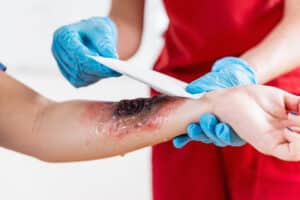Introduction
Every moms and dad's headache is the thought of their newborn encountering an essential emergency. Comprehending cardiopulmonary resuscitation (CPR) strategies particularly tailored for babies can be the distinction in between life and death in such circumstances. Yet, many moms and dads are uninformed of the one-of-a-kind procedures associated with performing CPR on infants. This detailed overview intends to equip every parent with crucial understanding and skills pertaining to CPR on newborns, diving into distinct techniques that can save lives.
CPR on Newborns: Distinct Methods Every Parent Need To Know
Cardiopulmonary resuscitation (CPR) is a lifesaving strategy utilized in emergencies when a person's breathing or heart beat has quit. While most individuals know with adult CPR, the approaches differ dramatically when it concerns babies. The delicate nature of a newborn needs certain methods that differ from those utilized on older children and adults.
Understanding Newborn Makeup and Physiology
Before delving right into CPR techniques, it's essential to recognize the composition and physiology of a newborn. Newborns have smaller sized lungs, vulnerable ribs, and a various blood circulation system than grownups. Understanding these distinctions can assist moms and dads carry out CPR even more effectively.
The Significance of Air passage Management
Newborns' respiratory tracts are smaller sized and much more prone to obstruction; hence, airway management is important throughout an emergency situation. Parents should discover how to effectively get rid of an air passage to make sure reliable breathing restoration.
Recognizing When to Carry out CPR
One of the first steps in any type of emergency situation is identifying when CPR is required:
- Unresponsiveness: If your child isn't reacting or moving. No Breathing: If your child isn't taking a breath generally or at all. Abnormal Skin Color: A blue tint around lips or face indicates absence of oxygen.
Initial Evaluation: The DRSABCD Approach
The DRSABCD method is vital for evaluating any type of emergency situation:
D - Danger: Guarantee the environment is safe. R - Response: Inspect if the baby responds by delicately drinking them. S - Send out for Help: Call for emergency help if needed. A - Airway: Open the airway by turning the head back gently. B - Breathing: Search for indications of breathing. C - Compression: If no breathing is detected, commence CPR. D - Defibrillation: Utilize an AED if available and experienced to do so.The Steps to Execute Baby CPR
Performing CPR on a newborn differs greatly from adults because of their dimension and fragility:
1. Positioning
Lay the infant on their back on a firm surface.
2. Opening Airway
Gently tilt the head back slightly to open the airway while making certain not to overextend it.
3. Check Breathing
Look for chest activities and listen for breath seems for around 10 seconds.
4. Chest Compressions
Using 2 fingers put just below the nipple area line, lower about 1/3 depth of their chest (concerning 1-1.5 inches) at a rate of 100-120 compressions per minute.

5. Rescue Breaths
After every 30 compressions, offer two mild rescue breaths:

- Seal your lips around their mouth and nose, Deliver each breath over one second while observing for upper body surge, Repeat until you see signs of life or help arrives.
Common Blunders During Infant CPR
Even sympathetic initiatives may falter because of usual errors:
- Applying too much stress throughout compressions can cause injury. Failing to make sure appropriate head tilt might block airflow. Not asking for help early enough can postpone critical care.
Mental Prep work for Emergencies
It's natural to feel panic in emergencies; nonetheless, psychological prep work plays a critical role in effectively carrying out Find Sunshine Coast First Aid Courses first aid measures:
- Remain calmness; stressing hinders clear thinking. Practice mindfulness techniques prior to going into parenthood.
FAQs Regarding CPR on Newborns
What must I do if my newborn quits breathing?
If your newborn stops breathing, swiftly examine their responsiveness, telephone call for assistance, check their respiratory tract, and start CPR as comprehensive above.
How commonly needs to I take first aid courses?
It's advised that moms and dads rejuvenate their understanding every 2 years by taking first aid programs or particular baby CPR training sessions.
Can I make use of an AED on an infant?
Generally talking, AEDs are not suggested for babies under one year old unless particularly made for such use; constantly adhere to maker's instructions.
Where can I discover first aid courses near me?
You can browse online utilizing terms like "first aid program near me" first aid sunshine coast or examine local healthcare facilities or recreation center that frequently provide these classes regularly.
How long does a first aid qualification last?
Typically, a lot of first aid accreditations stay valid for 3 years prior to requiring renewal with correspondence course which include updated techniques like DRSABCD protocols.
Is it necessary to learn psychological wellness first aid as well?
Absolutely! Mental health first aid outfits moms and dads with skills necessary not just in physical emergency situations but also in determining psychological distress among youngsters and adolescents.
Conclusion
Understanding "CPR on Newborns: Unique Strategies Every Parent Ought To Know" isn't simply concerning obtaining technological skills; it has to do with encouraging on your own as a caretaker ready to encounter unforeseen challenges head-on. Whether with committed training programs like those offered by various organizations or exercising hands-on methods with family members during workshops-- every initiative counts towards constructing self-confidence in your capacity to react successfully during emergencies entailing your precious newborns.

Incorporating this understanding into your parenting toolkit could suggest saving lives when it matters most. So why wait? Register today for classes such as "first aid course," "cpr training," or specialized "baby first aid course" options offered nearby-- you never ever understand when you could require them!